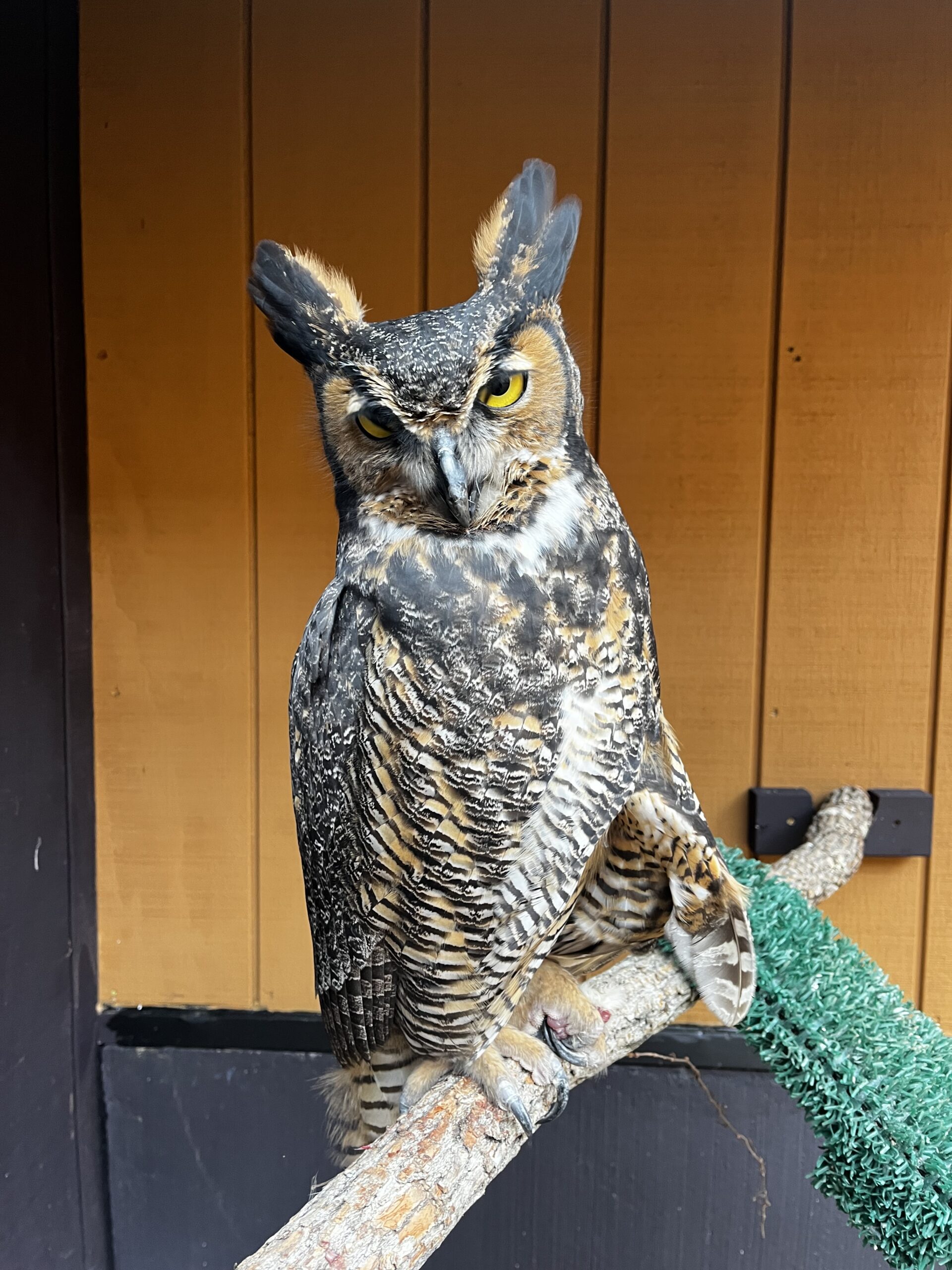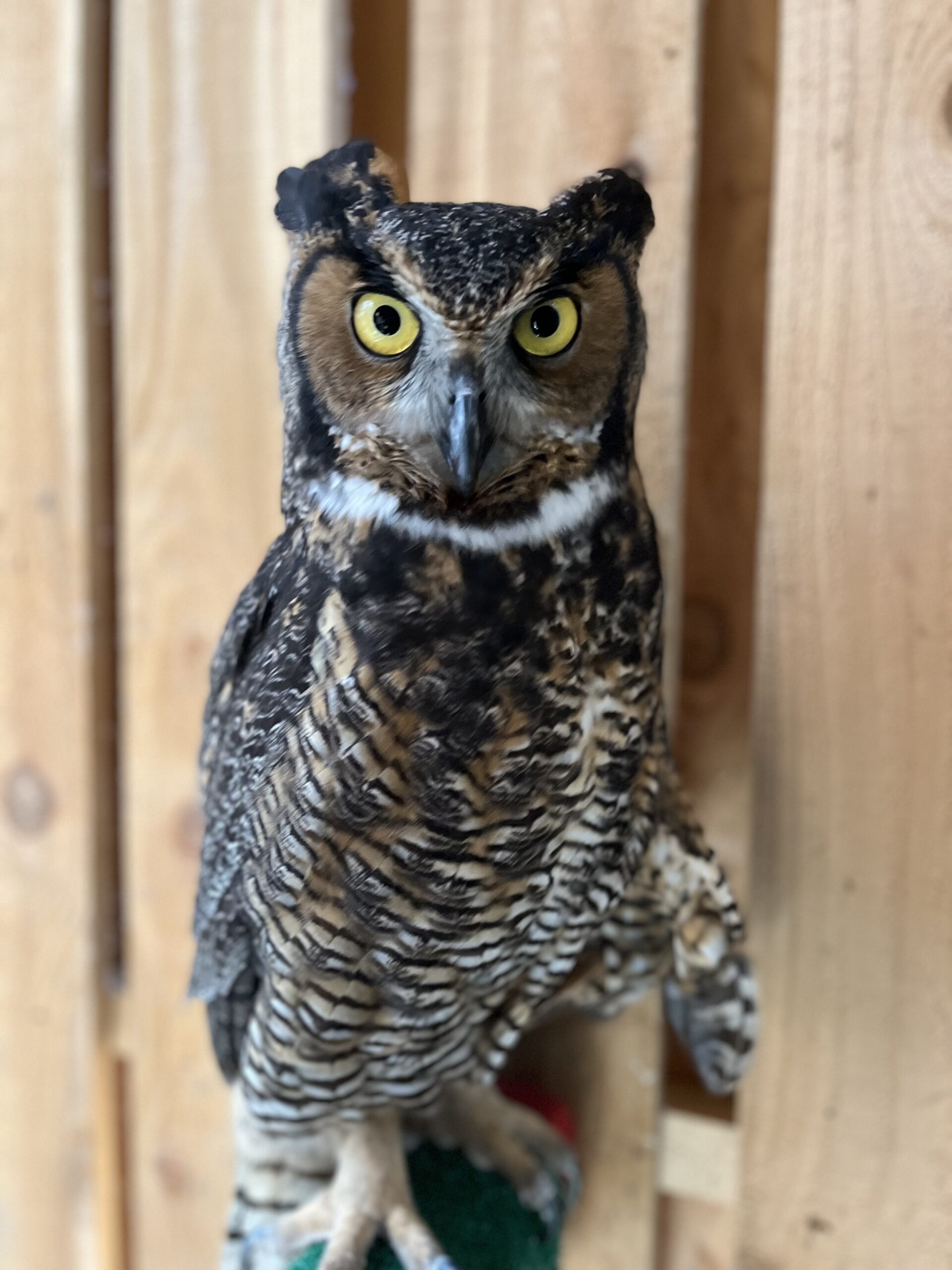RUBY
Species: Bubo virgianus, Great Horned Owl • Hatch Year: 2020 • Sex: Female • Disability: Wing Injury
Ruby fell from her nest when she was very young and ended up having a break in her left wing. Her parents, still taking care of her, would come down to the ground to feed her. Our rehabilitation manager rescued Ruby and brought her to AEF. Through the rehab process, Ruby was deemed non-releasable due to limited flight capabilities. She now resides at American Eagle Foundation and is currently in training to become an educational ambassador. Ruby thoroughly enjoys enrichment and jumps right to anything her handlers put in her room.
ABOUT THIS SPECIES
The Great Horned Owl is one of the largest members of the owl family. Their feet are as powerful as they are big, capable of seizing animals as large as opossums and racoons. This adaptable hunter is fearless, and is sometimes called the ‘Flying Tiger.’ The Great Horned Owl is also one of the only birds that dine on skunks and porcupines.
Great Horned Owls nest early, usually late December and January, in a large stick nest or the hollow of a tree. They also do not mind taking over the abandoned nest of a Red Tailed Hawk. After the young are hatched, they stay with the parents for several months until they are well versed in the art of hunting.
Owls can turn their heads almost all the way around (270 degrees). The reason they do this is because their eyes, unlike the eyes of humans, are locked in their sockets and are pointed straight ahead. They are capable of turning their heads so far because they have 14 vertebrae in their neck, double the amount that humans have.


